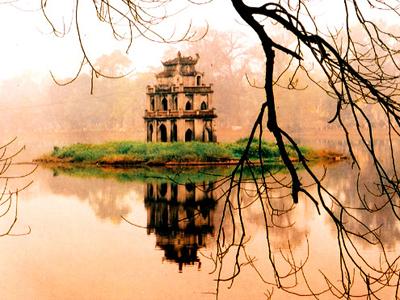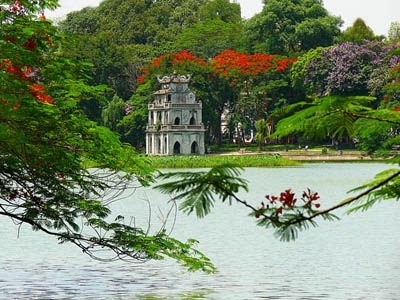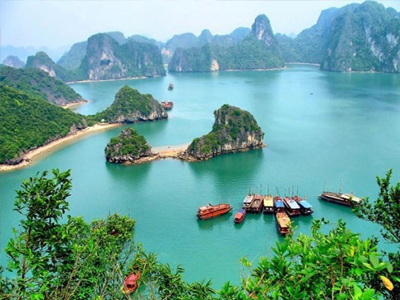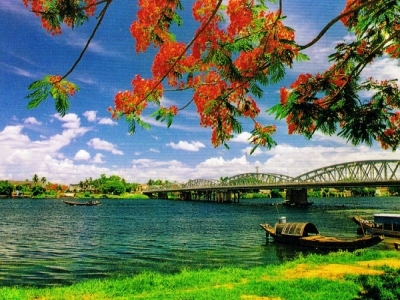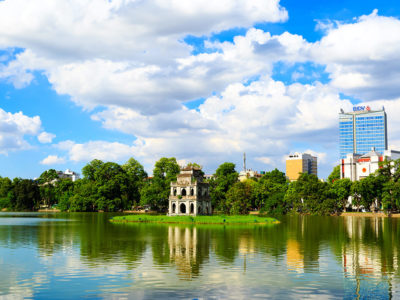Vietnam Travel Tips: Life Along the Mekong - The Cham Village
In a three-part series exploring the sleepy Mekong Delta region in southern Vietnam, “Life Along the Mekong” follows a traveller’s journey to some of the Delta’s most magical destinations that are still well off of the tourist trail. Floating markets, dusty villages, emerald rice paddies and flooded forests all adapt to the ebb and flow of the river that is still central to the livelihoods of Delta locals. See what the Delta has in store on in-depth Mekong Delta journeys into the heart of this agricultural epicentre.
If our host’s home was any indication of her life in this sleepy, dusty Cham village on the banks of the Mekong River, Ayesah valued her family above everything. The walls of this simple wooden home were littered with family photos, mementos of her still infant grandchildren and poster-sized images of family weddings. We’d only arrived 20 minutes ago, but Ayesah had already shuffled quickly to a nearby dresser and produced a photo album filled with photos of her three children and 10 grandchildren.
For her entire 81-years, Ayesah has lived just a stone’s throw from this small village near central Chau Doc. Unlike the villages not so far from here, though, this tiny ethnic enclave is distinct – the people here are from an ancient and unique heritage that sets them apart both ethnically and religiously from most of Vietnam. In a country dominated by Buddhism and Taoism in the city centres, this locals in this village are Cham – and predominantly Muslim.
From a culture that once ruled over land stretching from the coast of Vietnam into modern day Cambodia hundreds of years ago (leaving behind countless temples as relics), the Cham people in Vietnam now live in small communities a lot like this one. Their faith was likely brought over by ancient seafaring traders as far back as the 11th Century, during the height of the Champa Kingdom. Now, the communities are small but faithful to their history and heritage.
Unlike other parts of the Muslim world, the Cham borrow cultural elements from around them. The wedding pictures on the wall are a melting pot of influences – one photo with a puffy white princess gown, another with a sparkling Vietnamese ‘ao dai’. The only hint at the beliefs stringing these images together is the ever-present sash covering the bride’s hair and shoulders.
“The children here study Vietnamese in school and Arabic in the evenings at the mosque,” Ayesah tells us. “When they get older, they will go off to Saigon for university, but I know they won’t forget where they came from.”
Interwoven Cultures
Just like most Mekong communities, the Cham village here is still reliant on the ebb and flow of the river. Most families here still rely on agricultural to get by – fishing and farming make up the backbone of the tiny community’s income. Their trade usually overlaps with their neighboring villages – a combination of Khmer communities whose temple architecture looks more like Cambodia than Vietnam, and majority Kinh (or Vietnamese) communities. In recent years, there is very little dispute in culture and religion, though it wasn’t always that way.
“There used to be prejudice many years ago,” says Aseyah. “But we’ve learned to live together.”
It’s partly to do with the blending of the Delta’s diverse cultural landscape, especially for young Cham locals. Most will head into more urban areas of Chau Doc that they are in the vast minority, and learn to speak Vietnamese just as fluently as their local Cham tongue and the Arabic they’ll need for the studies in the Mosque. Apart from the veils that young women will wear, the locals here all but blend into the scenery of Chau Doc. The cultural differences are only obvious when wandering through the village, where hair is covered and it’s not unusual to see Cham men walking by in traditional garb and hats, called kufi.
The community remains distinctly influenced by Muslim faith and Islamic culture, though, because of the still-present barriers for entry. Though trade is welcomed and local visitors common, entering the community when marrying a local means converting to Islam. For a person just entering the faith, the transition is a cumbersome one – it’s an important Cham right of passage to learn to read and study the Quran in Arabic.
Cultural Cousins
Not all Cham communities in Vietnam are Muslim. Some still practice polytheism not unlike Hinduism, which was the most common faith among them during the Cham empire. It’s the same reason why Cham ruins don’t look so unlike Cambodia’s Angkor Temples or Hindu temples in nearby India or Nepal – in other parts of Vietnam where Cham communities still live, there is often an even split between Muslim Cham locals and traditionally Hindu.
For Ayesah, though, a life in her faith has been a fruitful one. While we sit cross-legged in her living room, she feeds us fresh pineapple and beef jerky while showing us her turquoise prayer beads and prayer mat. Even at her age, Ayesah prays 4 or 5 times every day along with her family, and even shows the trickle of outside visitors her visit her home how it’s done. Before we stand up to go, she’s quick to smile and thank us for visiting. Even in this sleepy Mekong village where the sun is hot, the warmth of the local hospitality of what leaves an impression.
Other Article:
- Laos Travel Tips:Top 10 Must-See Destinations in Laos
- Cambodia Travel Tips: Top 10 Attractions in Cambodia
- Vietnam Travel Tips: 5 Reasons You Should Visit Cu Chi Tunnels
- Laos Travel Tips: Visit Laos' 8 Most Unique Wats & Pagodas
- Cambodia Travel Tips: 5 (More) Things to See and Do in Siem Reap
- Laos Travel Tips: A Day in the Life of a Novice Monk in Laos
- Vietnam Travel Tips: Expert Travel Guide for Northern Vietnam
- Vietnam Travel Tips: A Beginner's Guide to Vietnam's National Day
- Laos Travel Tips: 7 Things to Do in Vientiane
- Laos Travel Tips: 5 Best Restaurants in Luang Prabang
- Cambodia Travel Tips: Top 10 Temples In Cambodia
- Cambodia Travel Tips: Making the Most of the Angkor Temples
- Vietnam Travel Tips: What You Need To Know

